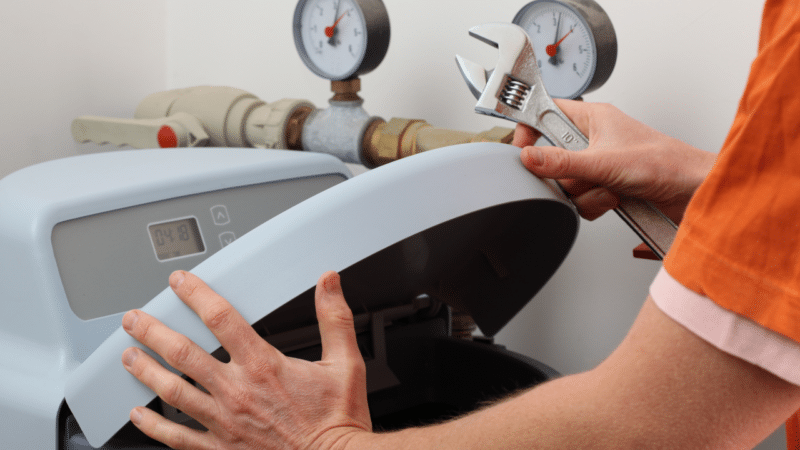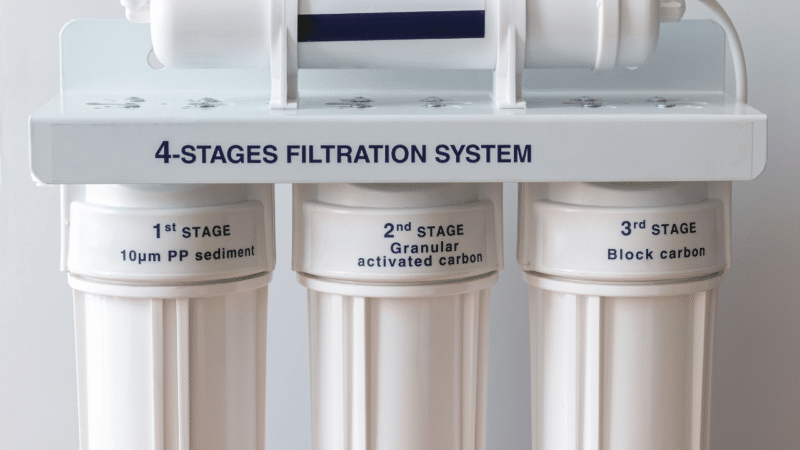In this article…
- Does Foundation Repair Damage Plumbing? How Your Plumbing Is Affected
- Understanding Hydrostatic Tests and How Your Plumbing Under The Slab Is Repaired
Maybe you’ve noticed cracks in your drywall and ceiling. Or maybe when you walk across a room, you notice a dip on one side that has recently formed.
No matter the signs and symptoms of foundational shifting you’ve experienced, you’ve found yourself in need of foundation repair.
With this, unfortunately, plumbing damage may occur to your sewer and potable water lines.
So, whether you’re in the process of having your foundation repaired or haven’t started yet, you need to know why and how foundation repair can damage your plumbing, if it can be prevented, and how it is fixed.
As a trusted Dallas and Fort Worth plumbing company, Jim’s Plumbing Now works with dozens of local foundation repair companies to provide high-quality plumbing tests and repairs following foundation repair.
Our combined expertise in working with numerous foundation companies and being an active member of the National Foundation Repair Association has placed us to be the number one educator on foundation repair and plumbing, and we’re here to provide you with all you need to know before repairing your home’s foundation.
This article will detail how foundation repair affects your home’s plumbing, if plumbing damage is preventable, and how it is repaired following foundation repair.
After reading, you will have a thorough understanding of how foundation repair affects plumbing and the next steps required to fix your plumbing and ensure it will last in your home.
Does Foundation Repair Damage Plumbing? How Your Plumbing Is Affected
Foundation repair, whether on a residential or commercial building, is an extensive process that puts a lot of stress on the structure.
Because both sewer and potable water lines are installed under the slab of the structure, they are in the direct line of construction for foundation repair.
So, does foundation repair damage your plumbing? The short answer is yes.
While damage doesn’t always occur, it is common. Let’s look more at why plumbing damage frequently happens with foundation repair and if it can be prevented.
Why And How Plumbing Is Damaged During Foundation Repair
Repairing a structure’s foundation can be an intense project your home endures. Breakout tunnels are dug under the slab, the beams are lifted to 8 to 12 inches, and construction and repair occur all underneath the floor of the structure.
Because sewer and potable water lines are installed under the slab of the structure, they lift with the foundation when repairs occur.
The plumbing, whether cast iron or PVC, is put under much stress when lifted as they are not made to drastically move throughout its lifetime (although PVC plumbing is much more flexible than cast iron).
When the plumbing is lifted along with the foundation, it can cause joints in the plumbing to separate, causing leaks. Severe movement in any area of plumbing can also cause cracking, creating leaks as well.
Existing leaks may also be present in your plumbing before foundation repair, so it cannot always be determined if foundation repair directly damaged your plumbing (stay tuned to learn more about this later…).
Overall, however, plumbing damage typically occurs during foundation repair because of the stress that occurs when lifting the foundation, causing the plumbing to life and potentially crack and break.
Can Plumbing Damage Be Prevented During Foundation Repair?
Now that you know how and why plumbing is damaged during foundation repair, the next reasonable question you have is…can this be prevented?
The truth? No.
We understand that after spending thousands of dollars on foundation repair for your home, the last thing you want is to spend more money on plumbing repairs. However, plumbing damage during foundation repair is hard to avoid.
Any damage that occurs to your plumbing is due to the nature of foundation repair and the condition of your plumbing.
For instance, if your plumbing is old and outdated and root intrusion or leaks are already present, foundation repair will just make it worse and bring this damage to light much faster than if you never had foundation repair.
If you want to know whether foundation repair damaged your plumbing, the only solution is to have your plumbing tested before any foundation repair starts.
By having a plumber test your drain pipes for any leaks before starting any excavation or foundation repair, you will know whether your plumbing was already damaged or if foundation repair was the leading cause of damage.
What Are The Next Steps For Your Plumbing After Foundation Repair?
Once foundation repair is complete, a hydrostatic test is required to ensure the integrity of your plumbing.
During a hydrostatic test, the sewage drain pipes are plugged using a test ball to create a closed seal. Then, the pipes are filled with water up to the foundation line. If the water holds, there is no leak and the test passes. If the water drops or never fills, the test fails, and there is a leak along the plumbing.
For potable water systems, a pressure test is performed by taking a pressure reading on the system, turning the water on, and letting it run for 15-20 minutes. If the pressure drops, this indicates there is a leak in the potable plumbing.
Essentially, a hydrostatic test reveals whether there is a leak in your plumbing drain pipes. This is required after foundation repair.
If your plumbing is damaged after foundation repair and no hydrostatic test is performed, any undetected leaks will continue to grow and damage your plumbing and foundation, causing water to build up underneath the slab and shift the foundation.
Understanding Hydrostatic Tests and How Your Plumbing Under The Slab Is Repaired
Now that you know how your plumbing is affected by foundation repair, if it can be avoided, and how it must be addressed, you understand how common plumbing damage is with foundation repair and what must be done to fix it and protect your home.
Plumbing damage is common and typically inevitable when foundation repair is required for both residential and commercial buildings because of the stress on your home, foundation, and slab during repair.
Once foundation repair is complete, a hydrostatic test is required to determine if there is any damage and leaks in your plumbing.
If you want to know whether foundation repair affects your plumbing, the best solution is to conduct a hydrostatic test before any construction starts. This will tell you if your plumbing has existing damage that must be addressed after foundation repair.
After the hydrostatic test is finished, any leaks or problem areas must be identified by a camera pinpoint test. This test allows a plumber to use a fiberoptic camera to inspect the plumbing lines and actually see where plumbing damage is and what causes the leaks.
Want to learn more about pinpoint camera tests? Check out this article that outlines the step-by-step process of a pinpoint camera test and when and why you need one.
Looking For A Trustworthy Plumber After Fondation Repair?
Jim’s Plumbing Now has been the trusted plumber for hydrostatic testing and repairs following foundation repair.
Our team of expert, licensed plumbers efficiently and effectively test your plumbing, diagnose any problems, and provide you with the proper repair plan to fix your plumbing.
If you suspect you may have leaks in your plumbing under the slab or recently had foundation repair, contact Jim’s Plumbing Now today for high-quality testing and fast results!




